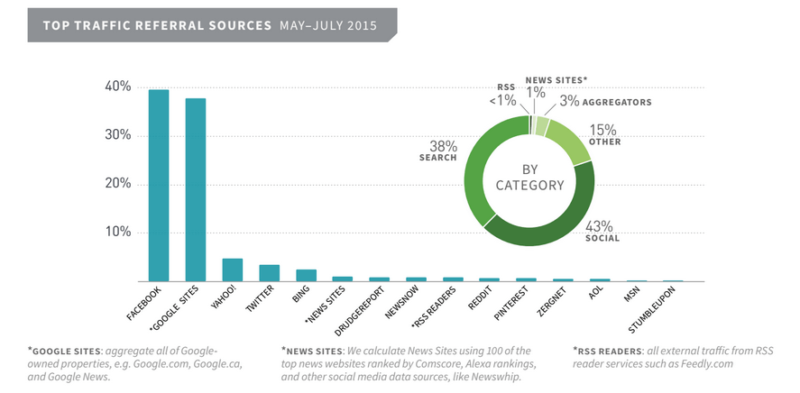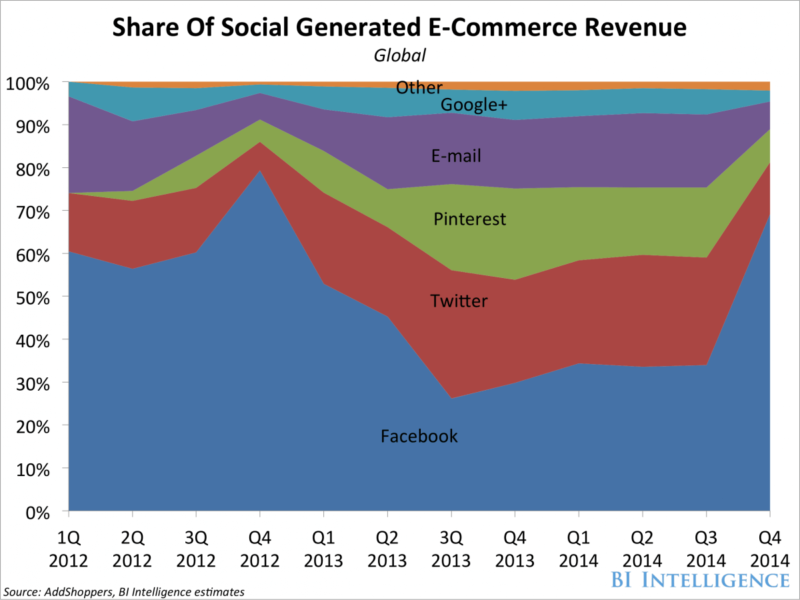Kursus Website - At our agency, we work with sites of varying sizes, from very large to quite small, and recently, we have noticed a trend at the enterprise level. These sites aren’t relying as much on Google for traffic any more. Not only are they not relying on Google traffic, but also, the sites are getting less than 10 percent (or slightly more) of their organic traffic from the search giant.
Now, it is not that these sites are not interested in Google users. In fact, they have hired us to help them increase their share. However, they are getting so much traffic from sites like Facebook that it seems there is less urgency about attracting this traffic and less willingness to change the site to meet organic standards. Not long ago, sites would urgently and unquestioningly abide by Google’s standards to court that traffic. Kursus Seo
Yet, is this the right direction? With the shrinking of organic listings and the push below the fold across many SERPs, is organic still worth it? Here are four reasons why you should not overlook your organic listings.
4 Reasons Organic Search Is Better
4 Reasons Organic Still Matters
1. Organic Still Rocks
Although it may have changed slightly since BrightEdge published its report last year, the data still seem to hold true. Organic is simply better for delivering relevant traffic. The only channel that performs better in some capacities is paid search ads, but that is only for conversions, not overall traffic delivery (Paid Search only accounted for 10 percent of overall total traffic).

However, we do find that by combining channels we can outperform either channel by itself.
BrightEdge research supports that a blended approach is best for delivering high performing content. Not only will combining organic and paid search increase website traffic, but it will offer a bigger return on the investment. Take Retail, Technology and Hospitality industries, for example — organic and paid search combined make up more than two-thirds of their total revenue.
So if you are neglecting your organic listings, your paid are not doing as well as they could, either. You are leaving money on the table in both organic and paid search.
2. No Control
When auditing sites, we often see that the client is getting as much as 40 percent to 60 percent of their traffic from Facebook. This traffic is sending their visits through the stratosphere. Yet their Google traffic is low — some of the lowest we have seen for sites of these kinds (typically publishers).

Chart by Simply Measured based on Parse.ly’s Research on Social Accounts
When I see this, my brain hurts a little. Yes, the love affair with Facebook traffic is very real and occurs for a good reason. A site sending you millions of visitors via a single referral source is a marketer’s dream come true. Well… it is until it isn’t.
Walled Gardens Have Their Own Rules
With Facebook (or any social media site), you are working inside a closed system, a walled garden. This means that while your section of it may be flourishing, you have no control over how that garden gets fed or if it gets watered at all.
What if Facebook decides that you no longer get to show off that garden of yours? What if Twitter decides to personalize the feed? What if Pinterest cuts off your affiliate links? These questions are very real because all of these have happened or are in the works.
When you are using social media platforms for your site traffic, you are at the mercy of that platform. If Facebook cuts organic viewing, you have to pay. If Twitter decides to segment the algorithm, how do you get seen? And if Pinterest removes all affiliate links, how do you replace that traffic?
When you don’t have control over the environment that’s driving your revenue, you may wind up with a hefty advertising bill to generate traffic that is lost when the company changes how the platform surfaces your content. Generally, these changes happen overnight or over a few weeks. That is not much time to adjust, especially for large companies.
But Google Does This Too, Right?
Well, yes and no. Sure, you can get hit with an algorithm change or penalty that destroys all your traffic. However, if you have good people who know what they are doing, this is not likely to happen, and if it does, it is easy (in most cases) to get your visits back. Panda and Penguin are another story, but if you get hit by those it is typically not accidental.
So though you may have to increase your spend in advertising to help replace the traffic while you fix your issues, the issues are fixable, and the traffic can be returned. You will not be replacing it forever, in most cases. (Again, Penguin and Panda are the exceptions because of the long time between updates.)
3. Site “Stickiness”
Social media and paid ads might be traffic generators, but they are not long-term customer creators. The bounce rates are high, and the number of pages visited is often very low, in my experience.
Of course, this makes perfect sense. If I come from my Facebook feed, I am likely to view one page and leave. What we see is that these site visitors generally view between 1.2 and 2 pages.
Facebook is meant to drive article visits, not overall site traffic and customer loyalty. Twitter is meant to promote customer loyalty, not create post traffic. Pinterest users hardly leave the site unless you are selling something. In that case, paid ads are offering the user a reason to come visit, but not necessarily a reason to come back.
Organic is different. Matching keywords to user intent means you may be present in many searches. The user may find you consistently, and once they get to your site, they are more likely to stay. Organic users are still your best long-term customers. In my experience, they have lower bounce rates and more pages visited, and they are more likely to return.
So if you want to sell something or gain brand awareness, social is an excellent channel. If you want people to find your store and remember you, organic is the way to go. Diversification is key because each platform has a different ROI potential. Organic is one of the strongest of these, and organic+paid can hit it out of the park.
From our experience with large scale social traffic generators, social just can’t deliver the same level of quality traffic, even if your site sees 50+ percent of its traffic from Facebook.
4. Investment
The issue with paid referral sources, whether Google AdWords or Facebook Advertising, is that the traffic only lasts as long as you feed the meter. Pull your money, and you will see an instant dip in traffic.
As I already mentioned, these users are not seeking you out; you ran across their path and they thought “Oh, cool, something I need right now!” If they have an excellent experience on your site, they may come back, but the ratio of retained visitors from paid is low in the sites we see.
When you’re paying for your traffic, it is like renting. You get an immediate action, but there is no long-term buy-in from most of the visitors you get this way.
With organic search, the user mindset is different. In that case, the user is looking for you, or at least what you sell/offer/publish. When they find you, if you provided an excellent experience, they often come back. If you are an unknown brand, repetitive appearances across results can start to increase brand recognition and brand loyalty.
If you get into the Knowledge Graph, you are the on-page authority in the result.
Investment Levels
In addition, if you invest in organic, you can, at times, lower that investment to maintenance levels or even take a break if needed.
Though a long break is never suggested, there are times that money can be shifted and put towards other resources for a short time. A good example would be an online retailer. In the couple of weeks leading up to the Christmas holidays, you are unlikely to get more organic placement than you already have. Besides, the window of opportunity for shipping gifts to arrive before Christmas is ending, and you are heading into a slow season.
You might decide to take an “organic break” and shift that money into immediate “last minute” sales through paid advertising. Your organic will not suffer, and your money will generate additional traffic.
When you do this, if the site is still doing what it needs to do by producing content, keeping a tight rein on technical issues and monitoring its inbound link profile, you will not generally lose any significant amounts of traffic, unless you’re in a highly competitive industry, or if you changed something that damaged your site in Google’s eyes. Kursus Website Terbaik
You cannot do this with paid. When the money goes away, so does the majority of the traffic that came with it.













0 komentar:
Posting Komentar